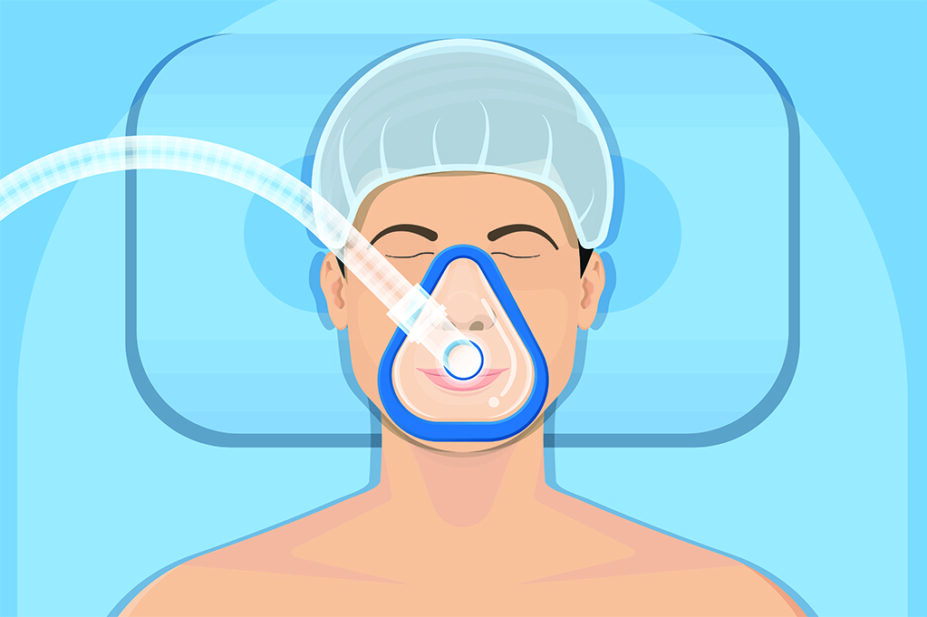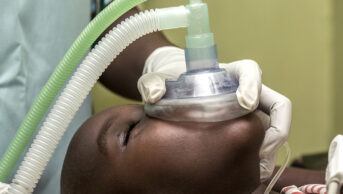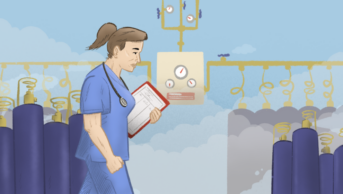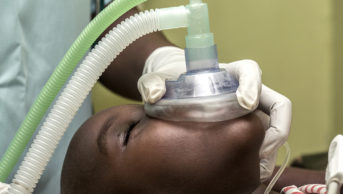
Shutterstock.com
Nitrous oxide is both clinically and cost effective; it is used extensively for its anaesthetic properties and, when combined 50:50 with oxygen, as pain relief.
Its environmental impact is now more widely understood, largely owing to the work of Alifia Chakera, head of pharmaceutical sustainability for the Scottish government and founder of the Nitrous Oxide Project[1,2].
However, we still have a lot to learn about the potential harm nitrous oxide could be having on the long-term health of staff who are exposed to it on a regular a basis, also known as ‘occupational exposure’.
Overall, anaesthetic gases contribute 2% of the total carbon footprint of the NHS, but nitrous oxide confers the largest proportion, accounting for at least 75% of the total anaesthetic gas footprint.
At King’s College Hospital, along with other trusts in the country, we are undertaking projects to reduce nitrous oxide wastage; an essential priority area on the net zero healthcare journey.
When looking into reducing the waste of nitrous oxide gases, we found that most of the waste comes from the piped manifold systems, as researched extensively by Chakera[3]. We also determined that only ~8% of what is purchased from suppliers is actually utilised clinically, meaning up to 92% of the nitrous oxide is wasted. There is a growing understanding that clinical usage is almost always low enough to be supplied via local cylinders, which would drastically reduce wastage.
There are easy fixes that can be undertaken in every hospital to reduce waste gas
Entonox (BOC), a mixture of nitrous oxide and oxygen, is primarily used on maternity wards via a demand valve system attached to a mouthpiece, which ensures that the gas is always available to patients when needed; however, this also means there is a risk of Entonox leaking out into clinical areas if any seals have deteriorated; the demand valves are left attached when not in use; or if the system is not appropriately maintained.
Leaks can cause occupational exposure across various areas around the trust site, including at ward level. When combined with in-use release, leaks can lead to increased ambient levels and, therefore, occupational exposure. This occupational exposure risk has not been well researched but there is evidence to show there can be detrimental effects for staff who are exposed to nitrous oxide gases over time. For example, in 1999, Bodin et al. found that babies born to women who had been exposed to Entonox over long periods of time were more likely to have a reduced birthweight and to be at an increased risk of being small for their gestational age[4].
Nitrous oxide is a substance with a workplace exposure limit (WEL), as listed in the Health and Safety Executive publication EH40/2005 Workplace Exposure Limits. In fact, the Entonox essential safety information sheet from BOC has a section on ‘special warnings and precautions for use’, which states that “reduced fertility in healthcare personnel has been reported where they have been repeatedly exposed to levels of nitrous oxide above the specified occupational exposure limits in inadequately ventilated rooms”[5].
The occupational exposure limit to nitrous oxide is set at 100 parts per million (ppm) in the UK, which is significantly higher than in many other nations; in the United States, it is 25ppm. Therefore, removing nitrous oxide manifolds and minimising clinical use are the most important approaches to mitigating the atmospheric emission of healthcare-related nitrous oxide.
King’s College Hospital is currently carrying out occupational exposure risk monitoring of Entonox in the maternity areas at both hospital sites to understand if staff in these areas are at risk. This can be carried out by midwives wearing samplers that measure their exposure; while open to the atmosphere, the tubes absorb nitrous oxide at a known rate and retain the gas inside the tube. Of course, if this was widely practised and levels came out above WEL, there would need to be decisions about the action required.
Engaging key stakeholders has been a crucial part of our waste reduction project, and spending time on maternity units, speaking to midwives, has made it clear that many are unaware of the dangers associated with these gases.
Luckily, maternity staff at King’s College Hospital are very on board with changing the current way of working. There are easy fixes that can be undertaken in every hospital to reduce waste gas with the potential for occupational exposure, including decommissioning manifold systems and changing to smaller, portable cylinders for use at ward and theatre level.
In maternity, inspiration can be taken from trusts such as Hull University Teaching Hospitals NHS Trust, which successfully capped the demand valves for Entonox on the ward when not in use. This saved the trust more than £40,000 per year, not to mention the impact it would have had on occupational exposure and the environment.
Occupational exposure risk can also be reduced through clearing the gas through air changes — where the air is turned over more quickly — or where anaesthetic gas scavenging systems are in place, such as in theatres. These are designed to remove anaesthetic gases and reduce staff exposure, but do not reduce wastage or the environmental impacts, unless associated with capture or destruction technologies. Note, the effectiveness of capture and destruction technologies is debated as they only reduce the environmental effects of in-use release.
So, while nitrous oxide is both clinically effective and cost effective, it comes with risks to both the planet and staff. You can start your own project to reduce waste with support from the ‘Anaesthetic nitrous oxide system loss mitigation and management technical update‘ document and via the Greener NHS futures nitrous oxide waste reduction page, ‘Reducing emissions from anaesthetic gases – Greener NHS Knowledge Hub – FutureNHS Collaboration Platform‘.
As pharmacy teams, we have a duty to ensure the safe and effective use of medicines. We need to act now to protect patients, staff and the planet; after all, what’s good for the planet is good for our patients.
Laura Stevenson is associate chief pharmacist, aseptic services, at King’s College Hospital NHS Foundation Trust
- 2Nitrous Oxide Mitigation: Launching the UK and ROI National Audit. The Centre for Sustainable Healthcare. 2021.https://www.youtube.com/watch?v=OreKYfF0d8s (accessed Feb 2023).
- 3Evidence-Based Policy Report: Reducing Environmental Emissions attributed to Piped Nitrous Oxide Products within NHS Hospitals. Scottish Government Health and Social Care Directorates. 2022.http://www.sehd.scot.nhs.uk/publications/piped-nitrous-oxide-products.pdf (accessed Feb 2023).
- 4Bodin L, Axelsson G, Ahlborg Jr G. The association of shift work and nitrous oxide exposure in pregnancy with birth weight and gestational age. Epidemiology Published Online First: 1999.https://pubmed.ncbi.nlm.nih.gov/10401879/
1 comment
You must be logged in to post a comment.



Should we not also be asking the media to also point out these dangers to kids using NO2 cylinders for 'kicks'